Component libraries and design systems are important development and design tools that allow teams to focus on building consistent and high quality experiences. Storybook is a tool that helps us with those experiences, but as your library and system grows, it becomes more difficult to maintain that level of high quality.
With the Applitools Eyes Storybook SDK, we’re able to provide visual testing coverage for all stories in your Storybook. The cool thing is this works for whatever UI framework you choose! Whether you’re using Storybook with React, Vue, Angular, Svelte, or even React Native, Applitools is able to support any framework Storybook supports.
Let’s dig in and find out what exactly Storybook is, where it helps, and how Applitools can easily provide coverage for any number of stories that a Storybook library supports.
What is Storybook?
Storybook is a JavaScript-based tool that helps teams build component libraries, design systems, and beyond.
It does this by providing a library-like interface, that shows different components and pages in isolation allowing developers, designers, testers, and users of the library to consume and work in each “story” in a focused environment.
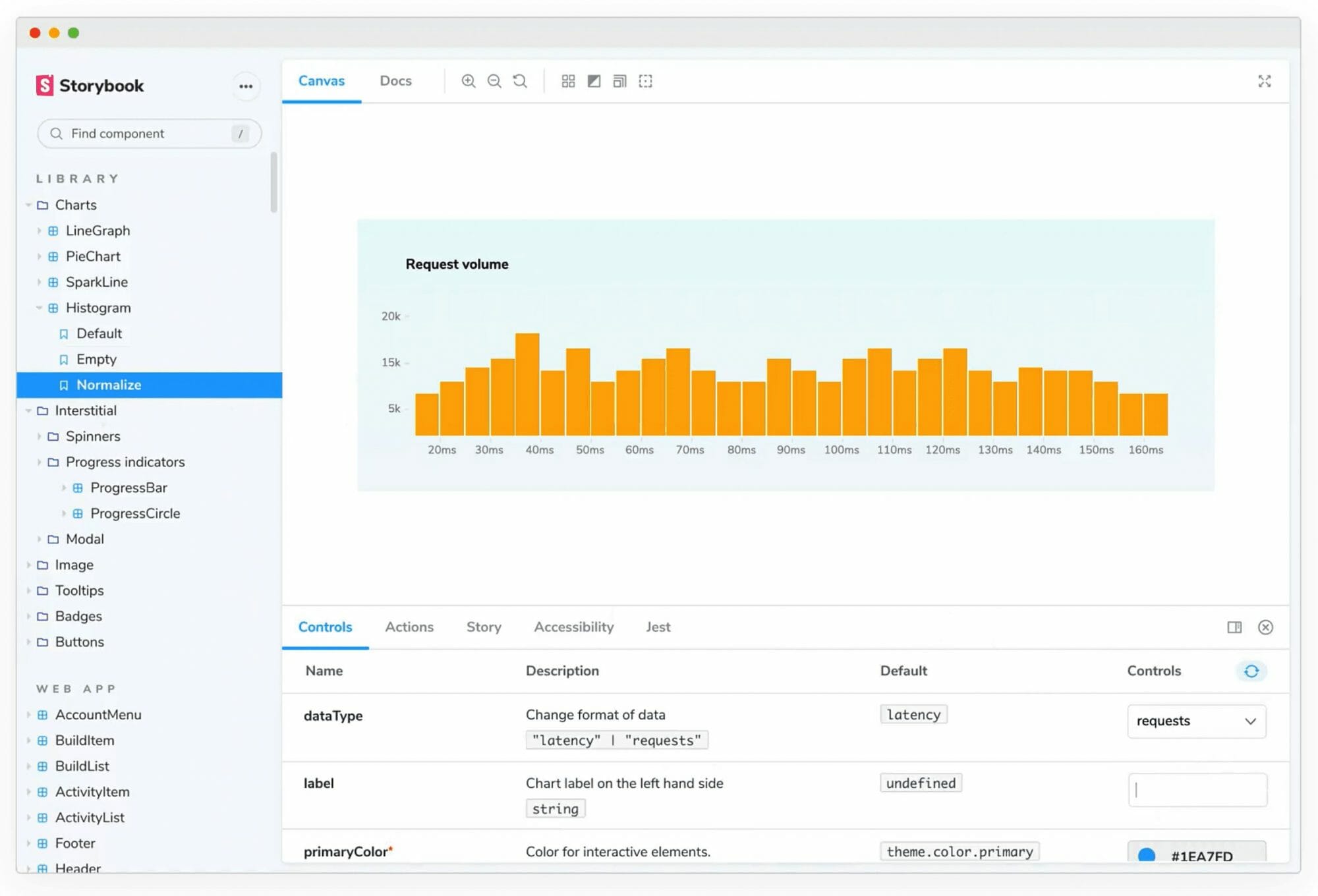
Each Storybook story is composed of a component or set of components that represent one piece of what someone would interact with or visualize in an application.
Testing and validating UI at the component level
While most stories don’t show an entire page built with these components, each of them are fit together in various ways to build the actual interfaces that are used by visitors of that app.
This gives the development team or users of the library an easy and flexible way to make sure each component works as expected from the start, where they can then have confidence to use it however they’d like in the application.
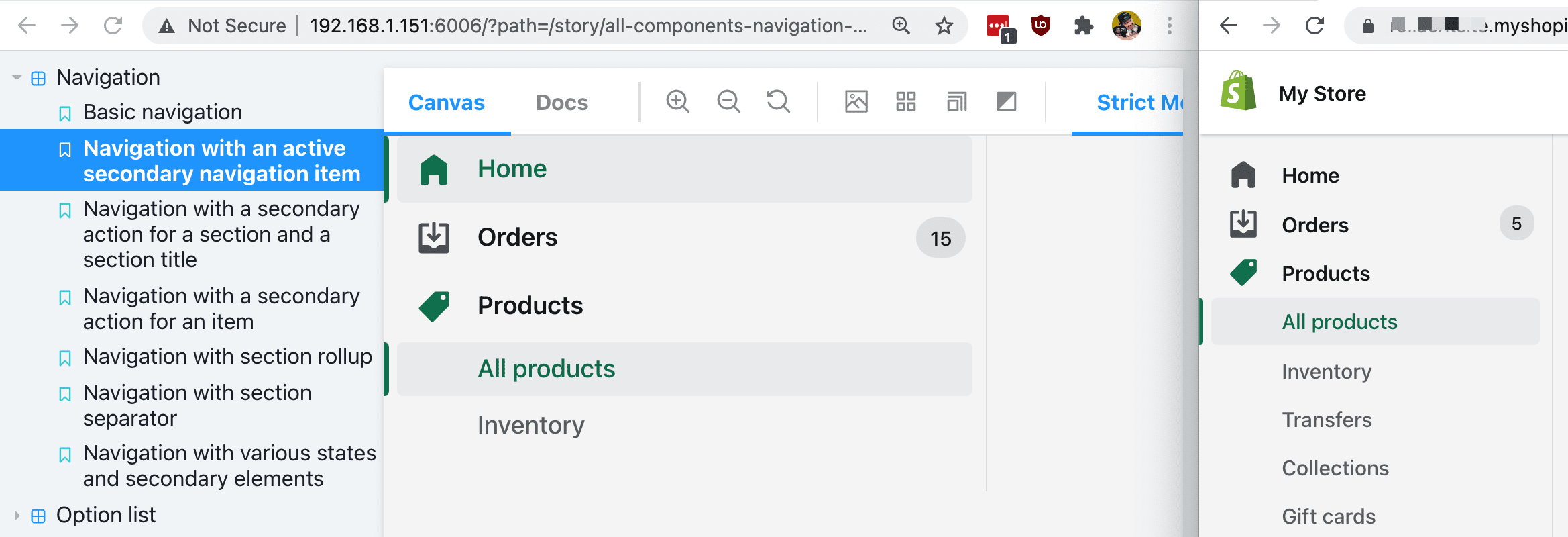
But the tricky part is making sure we’re providing proper coverage of each of the components in a way that will help us build that confidence along with finding a scalable solution as the library grows.
Solutions exist to provide code-based testing, where we might validate the string-based output of a component or test the components virtually mounted, but they’re not actually capturing what the users of the components are actually seeing.
Visual testing helps us solve that. We can capture what the user is seeing right in the browser, and use that to make sure our components and stories are working exactly like they should, giving us that needed confidence.
AI-Powered Visual Testing and Storybook
With the Applitools Eyes Storybook SDK, we’re able to easily provide coverage for any number of stories that our Storybook library supports.
After installing @applitools/eyes-storybook, all you need to do is simply run the following command:
npx eyes-storybook
Once run, Applitools will find all stories and start to capture each story much like other SDKs available for Eyes.
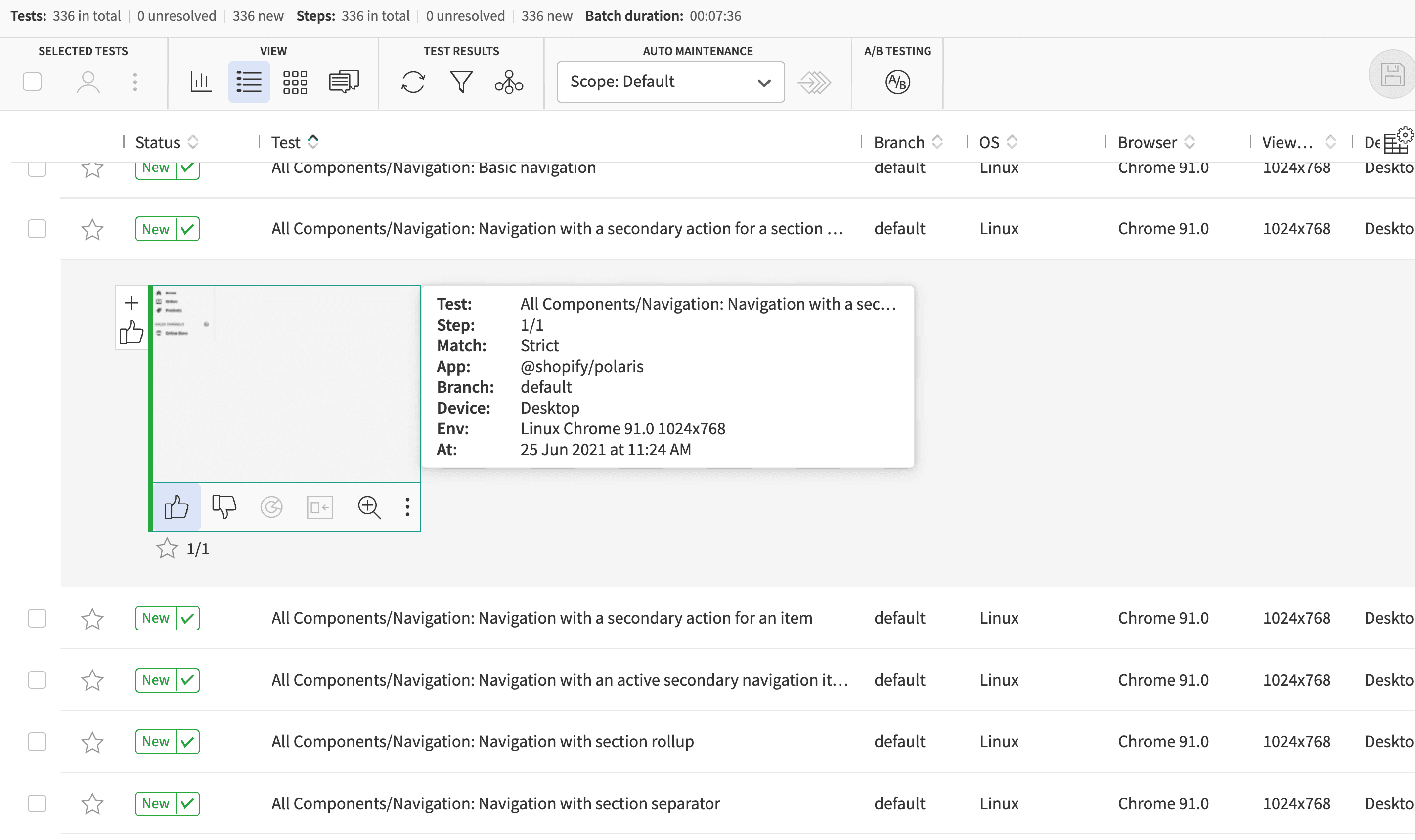
Because Storybook is ultimately web-based, where it renders any UI framework it supports right in a browser, the Eyes SDK is able to capture a DOM snapshot of that rendered output.
That means, the Eyes Storybook SDK can support any framework that Storybook can support!
The SDK uses Puppeteer, similar to the Eyes Puppeteer SDK, where each story is loaded in a new Puppeteer tab.
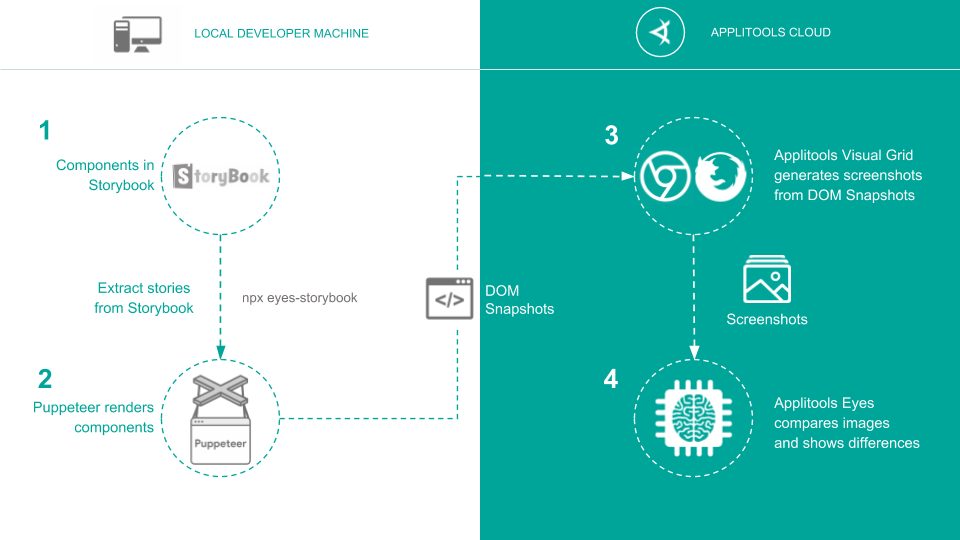
It then collects a DOM snapshot which is used to render each page cross-browser in the Applitools cloud, where you’ll then get the same AI-powered Visual Testing coverage that you would with any other Applitools integration.
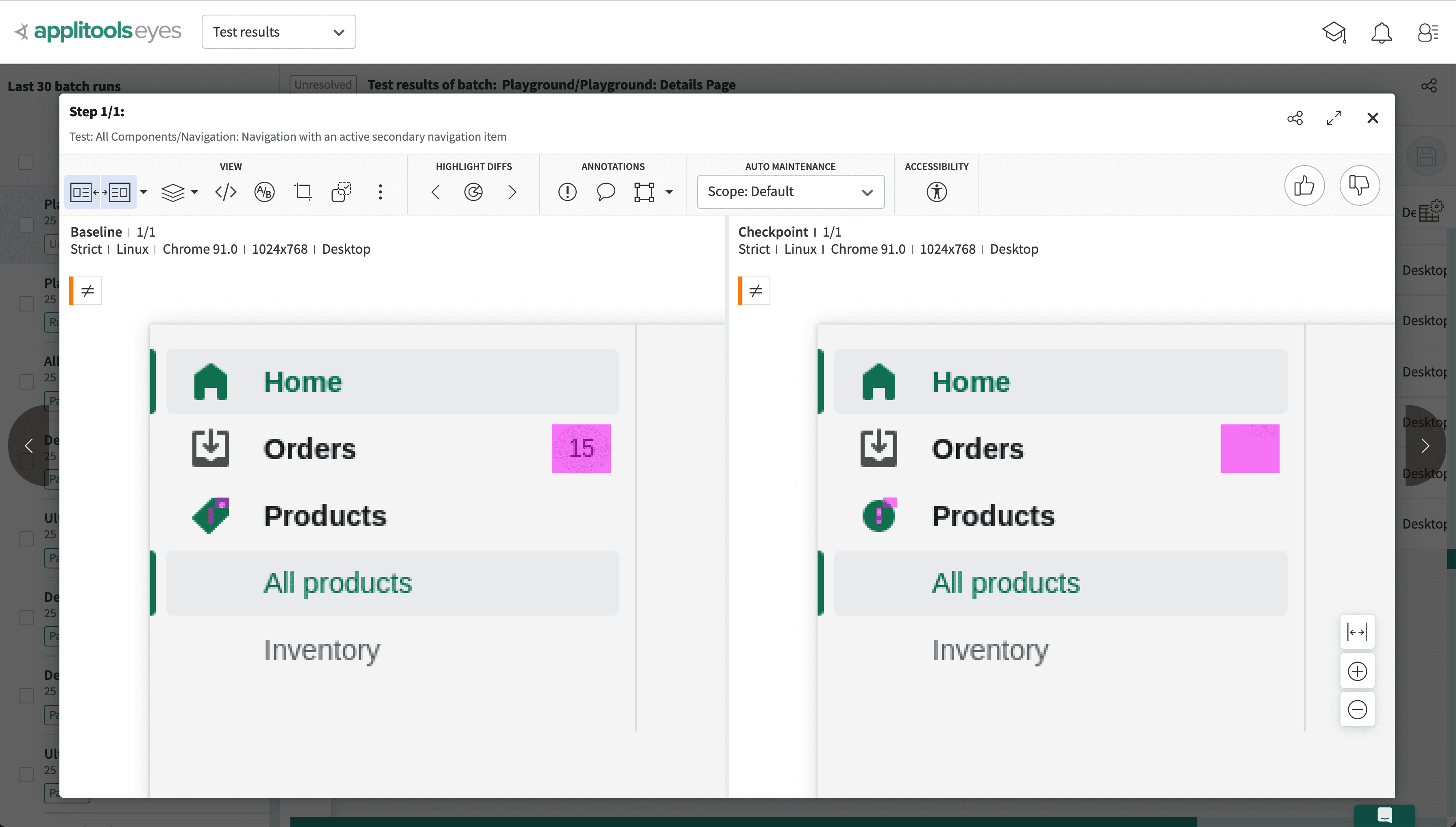
This helps so that we can visually identify the issues with our application, based on what people are actually seeing. Saving us time when trying to solve where the issue occurred or if it’s a false positive in the first place.
Getting started with Applitools Eyes and Storybook
If you want to get started with integrating Applitools Eyes with your Storybook library, we have a variety of resources including a walkthrough for adding Applitools Eyes to Storybook along with dedicated tutorials for React, React using CSF, Vue, and Angular.
You can also learn more about the importance of design systems with my free webinar Bringing Quality Design Systems to Life with Storybook & Applitools.







